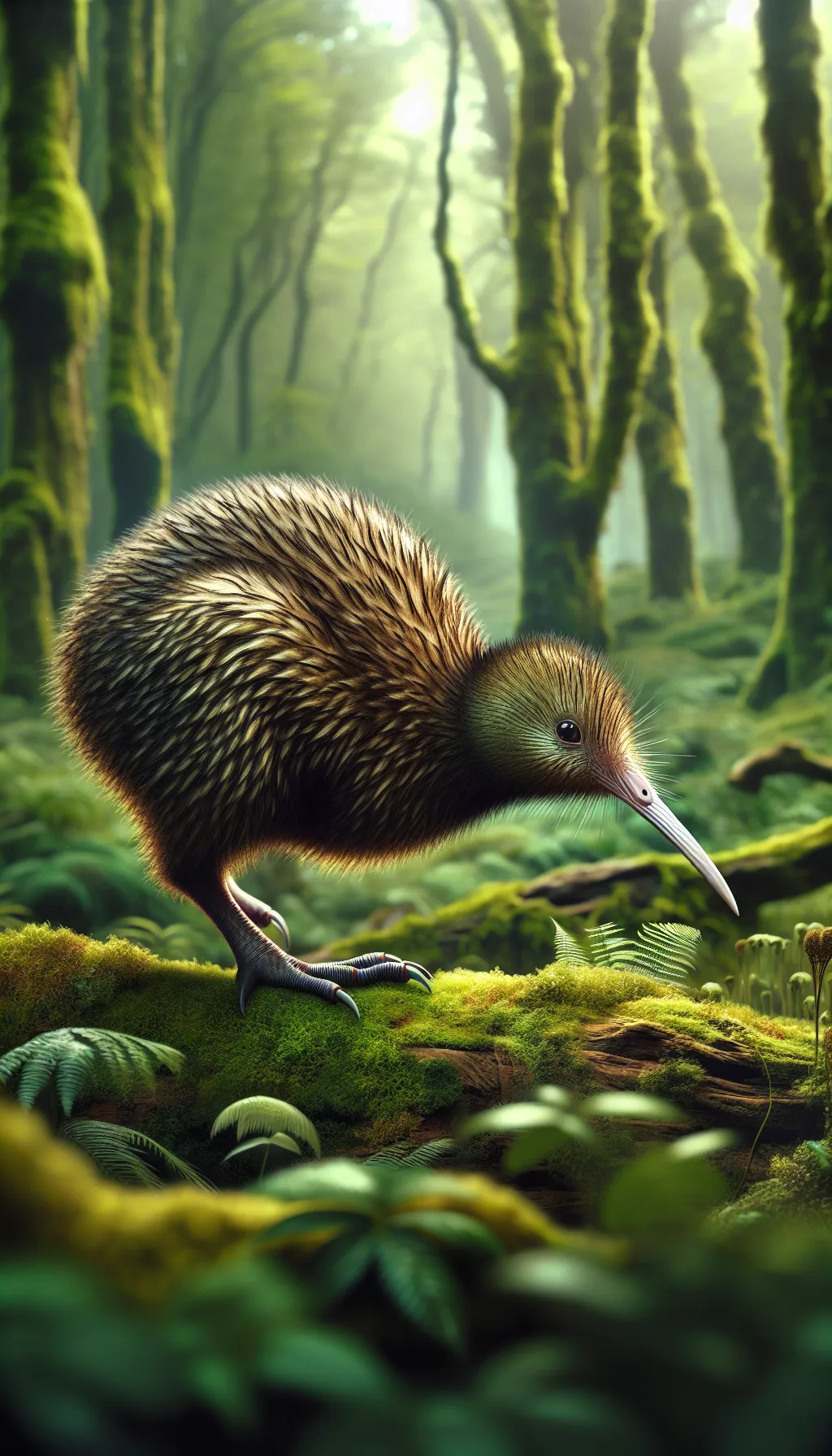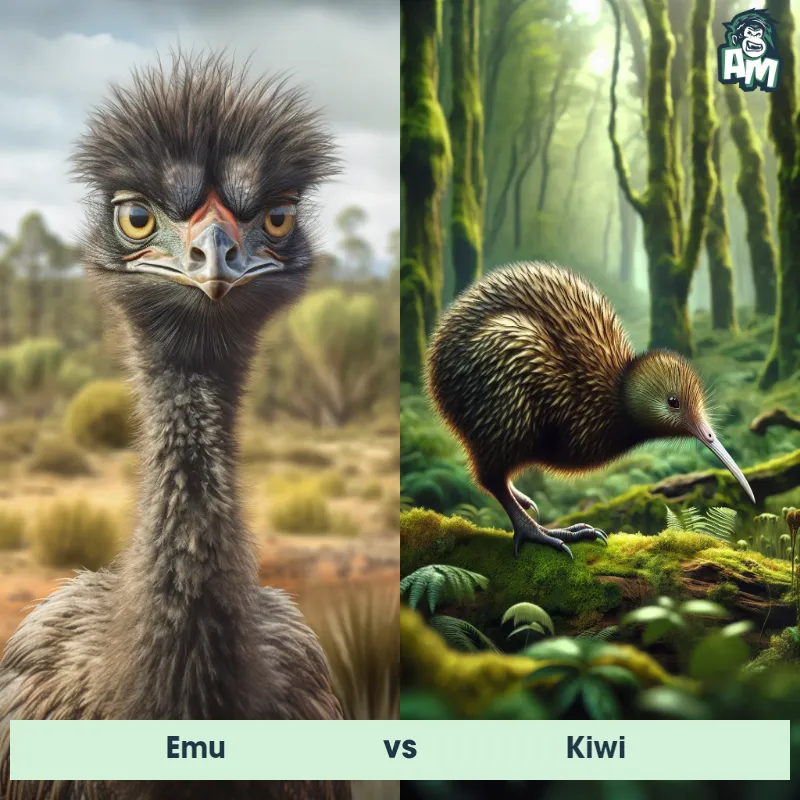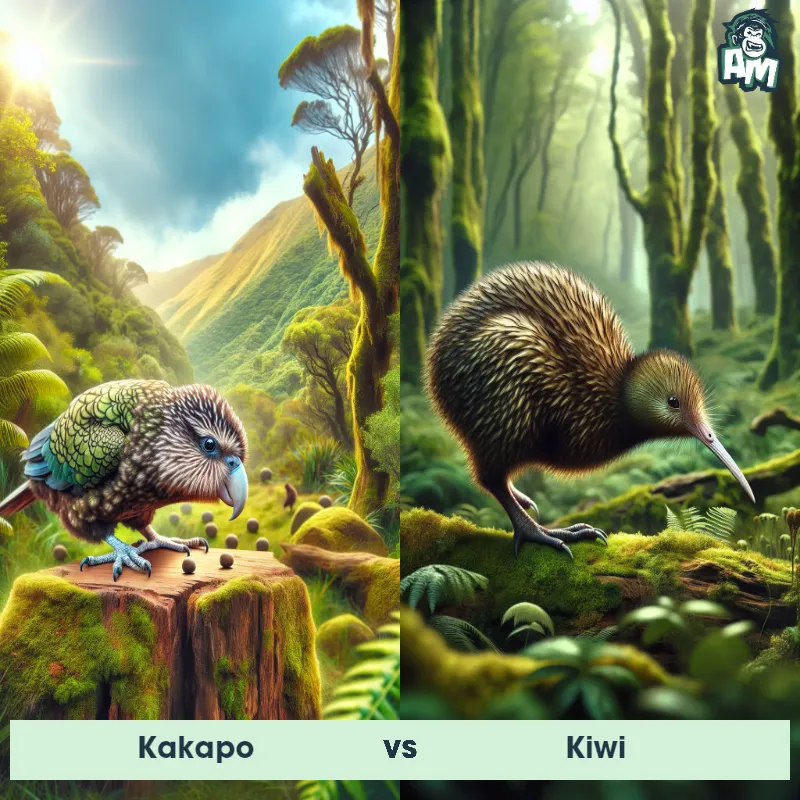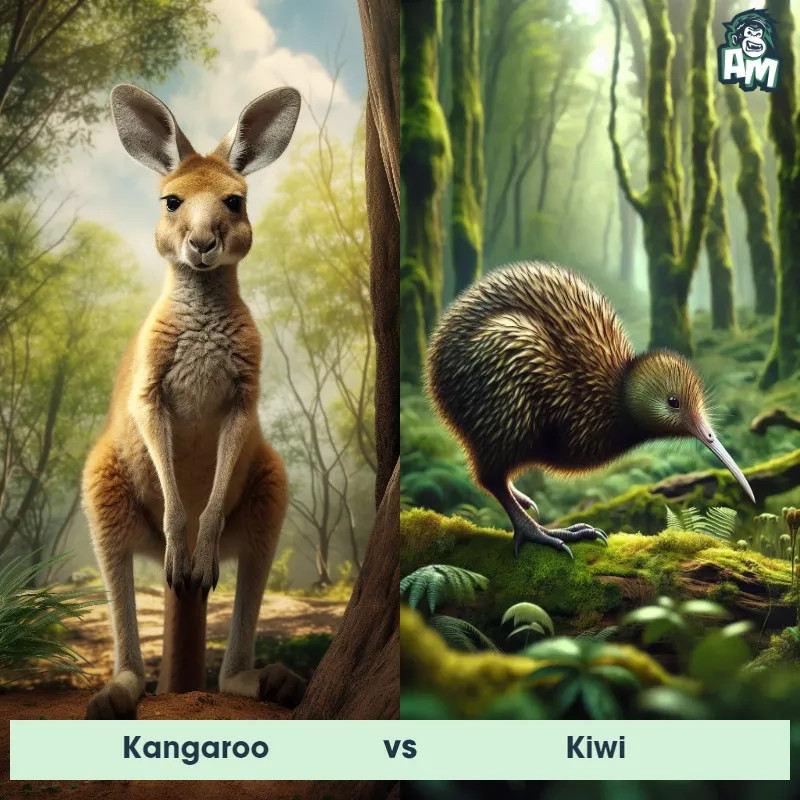The Kiwi
The Kiwi is a flightless bird native to New Zealand known for its unique appearance and behavior. With a small, round body covered in brown or grayish-brown feathers, it has long, slender legs equipped with strong claws that enable it to dig for food. Its most distinctive feature is its long, curved bill, which is used to probe the ground in search of insects and worms. Kiwis are mostly nocturnal, and they have poor vision but a keen sense of smell, which helps them forage for food in the dark. Despite their small size, Kiwis lay some of the largest eggs in relation to their body size among all birds.

| Kiwi | |
|---|---|
| Size | 14-18 inches (35-45 centimeters) |
| Weight | 3-8 pounds (1.4-3.6 kilograms) |
| Speed | 2mph (3.2km/h) |
| Key Strength | Strong legs and sharp claws |
| Biggest Weakness | Inability to fly |
| Scientific Name | Apteryx |
| Family | Apterygidae |
| Habitat | Forests, grasslands, and shrublands |
| Geography | New Zealand |
| Diet | Insects, worms, fruits, seeds |
| Lifespan | 15 years - 25 years |

The Kiwi
The Kiwi is a flightless bird native to New Zealand known for its unique appearance and behavior. With a small, round body covered in brown or grayish-brown feathers, it has long, slender legs equipped with strong claws that enable it to dig for food. Its most distinctive feature is its long, curved bill, which is used to probe the ground in search of insects and worms. Kiwis are mostly nocturnal, and they have poor vision but a keen sense of smell, which helps them forage for food in the dark. Despite their small size, Kiwis lay some of the largest eggs in relation to their body size among all birds.
Fun Fact: The Kiwi is the national symbol of New Zealand and holds significant cultural value for the country's indigenous Māori people, representing their connection to nature and their spiritual beliefs.
| Kiwi | |
|---|---|
| Size | 14-18 inches (35-45 centimeters) |
| Weight | 3-8 pounds (1.4-3.6 kilograms) |
| Speed | 2mph (3.2km/h) |
| Key Strength | Strong legs and sharp claws |
| Biggest Weakness | Inability to fly |
| Scientific Name | Apteryx |
| Family | Apterygidae |
| Habitat | Forests, grasslands, and shrublands |
| Geography | New Zealand |
| Diet | Insects, worms, fruits, seeds |
| Lifespan | 15 years - 25 years |
Kiwi Matchups
We use AI to simulate matchups between the Kiwi and other animals. Our simulation considers size, strength, and natural predatory behaviors to determine the most likely outcome.

Can't find the Matchup you want?
Create Your Own MatchupKiwi: Diet, Predators, Aggression, and Defensive Behaviors
What do Kiwis eat?
Kiwis are primarily carnivorous birds. They feed on a variety of insects, worms, and small invertebrates found in the leaf litter of the forest floor. They also eat fruits, seeds, and fungi when available. The long bills of kiwis are adapted for probing and digging in the ground to find their food.
Do Kiwis have any predators?
Kiwis have evolved in New Zealand, which had no native land mammals before human arrival. However, since the introduction of predators like stoats, cats, and dogs, kiwis have become vulnerable to predation. These introduced species prey on both adult kiwis and their eggs, posing a significant threat to their population.
Are Kiwis aggressive?
Kiwis are not known to be aggressive birds. They are primarily nocturnal and solitary creatures, so they tend to avoid confrontations with other animals unless provoked or threatened. They are more likely to use their sharp claws and beaks for defense rather than aggression.
Do Kiwis fight?
Kiwis are not known to engage in physical fights with each other or other animals. However, they can become territorial, especially during the breeding season when they defend their nesting sites and territories from intruders.
How do Kiwis defend themselves?
Kiwis are equipped with sharp claws on their feet and a long, pointed beak that they can use for defense. When threatened, kiwis can kick and lunge at their aggressors with their powerful legs and strike them with their sharp bill. They can also emit loud screeches and hisses to scare off potential predators.
What is Kiwis' biggest weakness in a fight?
The biggest weakness of kiwis in a fight is their relatively small size and fragile bodies. Despite their sharp claws and beaks, kiwis are not built for physical combat with larger or more aggressive predators. Their flightless nature and ground-dwelling lifestyle make them vulnerable to attacks from above, as they are unable to escape easily.
Fun Fact: Unlike most birds, the Kiwi has its nostrils located at the end of its long bill, allowing it to sniff out its prey underground.
Fun Fact: The Kiwi is a monogamous species, forming long-term partnerships with a single mate that can last for many years. They share parental duties, with the male incubating the eggs and the female guarding the nest, reinforcing their strong bond as a couple.















